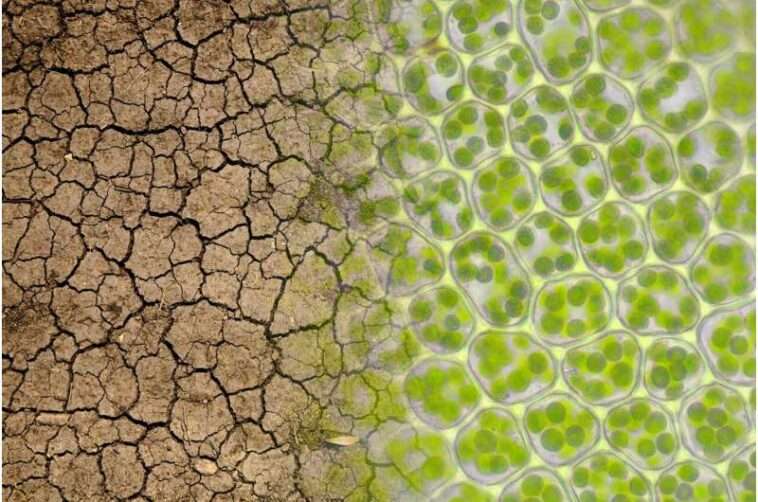We still have a lot to learn about how plants will operate and how nutritious they will be when more carbon enters the atmosphere, as shown by a new study by researchers at Michigan State University.
This new discovery may shed light on an unanticipated way in which climate change is transforming nature and human lives. It was recently published in the journal Nature Plants.
The new analysis was published by a group of researchers led by Berkley Walker, an assistant professor in the Department of Plant Biology. “What we’re seeing is that there’s a correlation between climate change and nutrition,” Walker said. We didn’t set out to investigate this, so it’s a pleasant surprise.
While Walker and his team found that higher CO2 levels are beneficial for photosynthesis, they also demonstrated that these changes can affect other metabolic processes in plants. Moreover, these underappreciated procedures may have relevance to other tasks, such as protein synthesis.
“Carbon dioxide is favoured by plant life. They can produce more food and increase in size if you provide them with more of it “remarked Walker, who divides his time between the MSU Department of Energy Plant Research Laboratory and the College of Natural Science. “The problem arises, though, if the larger plant you end up with has a reduced protein content. Actually, the opposite is true; it will be less nutritious.”
While Walker has expressed concern about a potential low-protein future for plants, he emphasised that it is too soon to draw any firm conclusions. Amino acids are the building blocks of proteins, but new study raises unexpected issues about how plants will create and metabolise these compounds with increasing carbon dioxide in the atmosphere.

Xinyu Fu, a postdoctoral fellow and the report’s first author, emphasised the importance of working diligently to solve these concerns now in order to be ready to face the future.
“The more we understand how plants use various metabolic pathways in response to changing environmental conditions, the more we can identify strategies to alter the metabolic flow and ultimately engineer plants to be more efficient and nutritious,” Fu added.
Photosynthesis is famously simple at its core: With the help of the energy from the sun’s rays, plants can convert the water and carbon dioxide in their environment into sugar and oxygen.

However, occasionally this procedure gets off to a shaky start. The enzyme that normally collects carbon dioxide can also bind to oxygen.
In Walker’s words, this results in a byproduct that might suffocate the plant if allowed unchecked. Fortunately, plants have a process called photorespiration that gets rid of the toxic byproduct and gives the enzyme another go at photosynthesis.
While photosynthesis gets all the glory for turning carbon dioxide and water into food, photorespiration is often maligned as a waste of resources. Even while photorespiration isn’t very effective, it’s preferable to the alternative.

Walker commented, “It’s almost like recycling.” It would be ideal if we didn’t require it, but since we’re already producing garbage, we might as well put it to good use.
Amino acids, the building blocks of proteins, are among the metabolites into which carbon is incorporated during photorespiration.
According to Walker, “photorespiration isn’t just recycling; it can be upcycling.”
Walker avoided using the more definitive “is” in his sentence, and with good cause. The ultimate destination of the metabolites created during photorespiration is still a mystery.
Digging into metabolism
For a long time, it was thought that the amino acids created by photorespiration would simply cycle back through the system. This means that the metabolites produced are only involved in a small subset of cellular structures and metabolic reactions.

The team from MSU has now demonstrated that this is not always the case. They have demonstrated, in particular, that the amino acids glycine and serine can break out of that entrapment loop.
An unanswered question, and one that may grow in significance as carbon dioxide levels rise, is what happens to the compounds over time.
Since plants photorespire less when there’s more carbon dioxide in the air, Walker argues that additional research is needed to understand how plants make and utilise these amino acids.

However, he and his team are currently ecstatic about their breakthrough discovery. It entailed giving plants a kind of carbon dioxide in which the carbon atoms contained one extra neutron than the carbon normally found in the environment.
As befits a subatomic particle, a neutron’s mass is negligible. Approximately the same mass as a neutron would be contained in the smallest pieces if a paper clip were to be sliced into a trillion pieces, each of which would then be cut into a trillion more pieces.
The MSU team, however, had the resources and knowledge to accurately measure the slight mass variation. The researchers were able to track the slightly meaty carbon in photorespiration-friendly conditions thanks to the combination of these data with computer modelling.

A better and more quantitative understanding of key plant metabolic pathways has been made possible, Fu added, thanks to the development of this new approach. According to the researchers, “the new flux technique has allowed us to begin to show the dynamic status of metabolic pathways and to understand metabolism as a unified system.”
Walker, who started working at MSU in 2018, stated, “I said that my lab could do this on my job application, but I wasn’t absolutely sure it would work.” Graduate student Luke Gregory and research assistant professor Sean Weise deserve credit for their efforts on the paper’s success.
University Distinguished Professor Thomas Sharkey, Professor Yair Shachar-Hill, and the MSU Mass Spectrometry and Metabolomics Core team all contributed to this work.
According to Walker, “coming at MSU uniquely permitted this to happen.”




GIPHY App Key not set. Please check settings